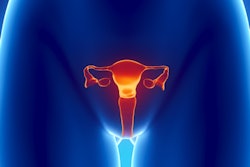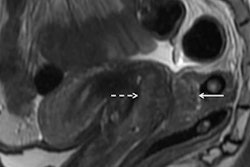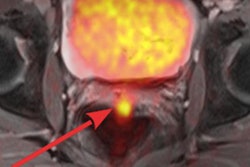
Swedish researchers have found that using ultrasound together with endometrial biopsy results and clinical characteristics helps predict the risk of lymph node metastases in endometrial cancer patients before surgery. They presented their findings in a study published online on 16 December in Ultrasound in Obstetrics & Gynecology.
The prospective multicenter study compared three ways to assess metastases: endometrial biopsy alone, biopsy with ultrasound, and biopsy with ultrasound and risk characteristics. The study team led by Dr. Linda Eriksson from the pelvic cancer department at Karolinska University Hospital in Stockholm found the method using all three showed higher sensitivity and specificity.
"Our risk prediction model can be used to decide which women should or should not be subject to lymphadenectomy or sentinel node biopsy, depending on the individual risk of lymph node metastases," they wrote.
Comparing modalities
Lymphadenectomy is required for surgical staging in endometrial cancer, but it doesn't have any survival advantages in early-stage endometrial cancer and isn't recommended in low-risk cases. Using transvaginal ultrasound or MRI along with preoperative biopsy helps to determine the necessity of lymphadenectomy.
What can further refine the process is a preoperative risk prediction model to assess the risk of lymph node metastases before surgery -- to avoid undertreatment or overtreatment with lymphadenectomy.
Previous research has relied on small, retrospective studies that use MRI to create a prediction model. However, transvaginal ultrasound demonstrates similar accuracy to MRI and has the advantage of being accessible, well-tolerated, less expensive, and less time-consuming.
In the current study, Eriksson and colleagues sought to develop a preoperative risk prediction model with variables from demography, endometrial biopsy, and ultrasound to estimate the individual risk of lymph node metastases in endometrial cancer patients. They then compared its performance with endometrial biopsy results alone or endometrial biopsy results combined with ultrasound findings.
The study included 1,501 women with histologically confirmed endometrial cancer from 16 centers in seven European countries. The women were subjected to transvaginal ultrasound before surgery. The information they included to assess risk was age, duration of abnormal bleeding, result of preoperative endometrial biopsy (histotype and grade), tumor extension according to ultrasound, color content of the endometrial scan, tumor size according to ultrasound, and "undefined tumor with an unmeasurable endometrium."
The individual predicted risk of lymph node metastases was obtained by multiplying each risk factor by its prediction coefficient and adding the intercept.
Clinicians performed lymphadenectomy in 691 women, of whom 127 had lymph node metastases. Endometrial biopsy and endometrial biopsy combined with ultrasound have fixed sensitivities and specificities, but the risk prediction model does not -- it can be shifted upward to obtain a better specificity or downward to obtain a better sensitivity based on different threshold levels. For a comparison, see the table below.
| Lymph node metastatic risk model vs. endometrial biopsy and ultrasound | ||||
| Endometrial biopsy | Endometrial biopsy + ultrasound | Risk model at threshold of 0.196 | Risk model at threshold of 0.113 | |
| Sensitivity | 35% | 75% | 50% | 80% |
| Specificity | 77% | 52% | 80% | 53% |
Even when the researchers continued to fiddle with the risk threshold, it outperformed both endometrial biopsy alone and endometrial biopsy combined with ultrasound. They also found the overall area under the curve of the risk prediction model was 0.73.
"The use of a risk prediction model can aid in planning the expected operation room time and the need of a skilled surgeon," Eriksson and colleagues wrote. "If implemented at the point of care, the model can be integrated into ultrasound machines or apps that automatically calculate the risk of lymph node metastases."
Given the large sample size and the multicenter design, the study is likely generalizable. However, further validation on new data is needed, preferably with known sentinel node outcome in cases without lymphadenectomy.
"After successful external validation, an impact analysis (i.e., decision-analytic modeling, a cost-effectiveness analysis, a before-after implementation study, or a randomized trial) would add to the evidence required before introducing the model into clinical practice," the researchers concluded.



















